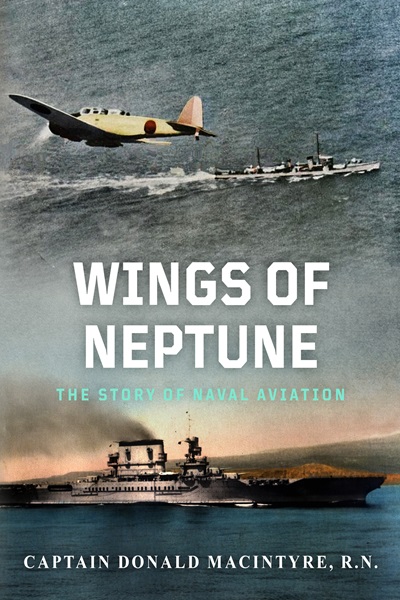
The battles of the Coral Sea, Midway, Eastern Solomons, Santa Cruz Islands, and Philippine Sea showcase the power of ship-based air power.

The battles of the Coral Sea, Midway, Eastern Solomons, Santa Cruz Islands, and Philippine Sea showcase the power of ship-based air power.
But how did naval aviation emerge? And why was the Pacific such a ferocious battleground for aircraft carriers and their planes?
This book is perfect for fans of Ian Toll, James D. Hornfischer, and N.A.M. Rodger.
Beginning with the origins of naval aviation, Donald Macintyre traces the use of aircraft by naval forces from their fledgling days just prior to World War I to their apex of power at the Battle of the Philippine Sea during the Second World War.
Wings of Neptune examines why, after witnessing the potential of naval air power during the First World War, navies diverged in their approaches. While British forces were provided with an inadequate air component, the Japanese and United States embraced air arms as integral to their sea power. The second part of this book explores the intense conflicts between these naval aviation proponents in the Pacific theatre of World War II.
Drawing on his expertise as a convoy commander who liaised with supporting air cover and his renowned historical research, Macintyre provides a thorough investigation into the emergence of aircraft carriers during World War II and why air power became crucial to modern navies.
“interesting and useful coverage of the naval aviation side of World War II.” U.S. Naval Institute